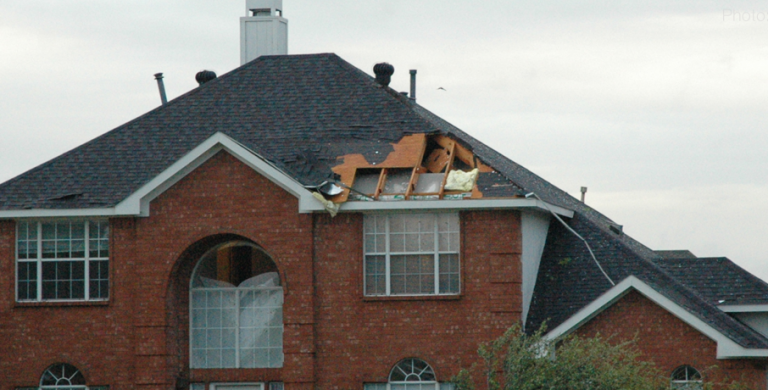After a severe storm hits your area, it’s essential to do a storm damage inspection.
1. Evaluate the structural integrity of your home, looking for sagging roof lines, leaning walls, bulging areas and a separated foundation. Stay clear of the home if any of these signs are present. 5. Examine your gutters and downspouts for dents, holes, cracks, sagging, improper alignment and clogged debris. Use this 10-point checklist to conduct a storm damage assessment of your property:
2. Look for damage around your property, including damaged trees close to your home; fencing and decking; cracks or other structural damage to your driveway; fallen limbs; and downed power lines. Stay clear of downed power lines and report them to officials immediately.
3. Check your vehicles for dents, scrapes from debris and water damage.
4. Inspect the roof of your home, looking for bruised, dented, curled, split, cracked, torn, loose, or missing shingles, or shingles with holes in them or missing their protective granules. Also look for any trees limbs, branches, or other debris that has fallen onto your roof, or if there is damage to roof vents, chimney flashing and other roofing components.
6. Check the exterior siding of your home for cracks, breaks, dents, holes, dings, chips, splitting, or discoloration.
7. Inspect windows for cracks, broken or shattered panes, and damaged window casings and frames.
8. Examine exterior appliances, like air conditioning units, for damage to its housing and components.
9. Check your attic for damaged decking, water spots, or daylight shining through cracks.
10. Inspect the interior of your home for framing damage, loose rafters and leaks in your ceilings or basement.
No matter how minor or major the storm damage to your home may be, always contact your insurance company for a professional storm damage inspection because oftentimes damage is hidden from plain view.
For More Info, Visit:
National Storm Damage Center (https://www.stormdamagecenter.org/index.html)




